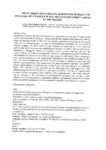Use este identificador para citar ou linkar para este item:
http://www.alice.cnptia.embrapa.br/alice/handle/doc/972109Registro completo de metadados
| Campo DC | Valor | Idioma |
|---|---|---|
| dc.contributor.author | RONQUIM, C. C. | pt_BR |
| dc.date.accessioned | 2013-11-25T11:11:11Z | pt_BR |
| dc.date.available | 2013-11-25T11:11:11Z | pt_BR |
| dc.date.created | 2013-11-25 | pt_BR |
| dc.date.issued | 2013 | pt_BR |
| dc.identifier.citation | In: INTERNATIONAL ANNUAL MEETINGS, 2013, Tampa, FL. Proceedings... Tampa: Asa | pt_BR |
| dc.identifier.citation | CSSA | eng |
| dc.identifier.citation | SSSA, 2013. | eng |
| dc.identifier.uri | http://www.alice.cnptia.embrapa.br/alice/handle/doc/972109 | pt_BR |
| dc.description | Recent projections of the Brazilian Ministry of Agriculture for the next 12 years, based on the recent demand for biofuels, indicate that the area planted with sugar-cane and soy bean will increase 66.6%. In this land use scenario, agriculture development will not be ruled only by food production, but also by the production of biofuels. In the context of climatic changes, the observation of these scenarios is important to inform land use policies and also to evaluate the contribution of fitomass in carbon balance and storage. Embrapa is looking for answers to inquiries on how global warming will alter the current national agricultural configuration. However, information about the importance and potential for carbon sequestration by agrosystems is still scarce. Thus, assesments such as those proposed by this research are important for the scientific progress in this area. This study presents the evaluation of carbon storage dynamics in sugar-cane and pastures agroecosystems. The change land use and occupation was based on satellite images interpretation of northeast area of São Paulo state and carried in two different times: 1988 and 2003. The results revealed that the sugar-cane is capable to accumulate nine times more carbon in t.ha-1.yr-1 than the pastures. The expansion of the cultivated area with sugar-cane, with efficient accumulation of CO2 for area unit and time (107,2 t CO2 ha-1.yr-1) possibilited to remove of the atmosphere 128.8 million t. CO2 in fifteen years. The results obtained can be relevant for the generation of environmental indicators and provide a more effective basis for transnational negotiations related to agricultural commodities, besides producing positive impacts on the environmental valuation of the production systems. | pt_BR |
| dc.language.iso | eng | eng |
| dc.rights | openAccess | eng |
| dc.subject | Climatic changes | pt_BR |
| dc.title | Carbon dynamics in agrosystems related to land-use changes in sugar cane expansion areas int he Brazil. | pt_BR |
| dc.type | Resumo em anais e proceedings | pt_BR |
| dc.date.updated | 2013-11-25T11:11:11Z | pt_BR |
| riaa.ainfo.id | 972109 | pt_BR |
| riaa.ainfo.lastupdate | 2013-11-25 | pt_BR |
| dc.contributor.institution | CARLOS CESAR RONQUIM, CNPM. | pt_BR |
| Aparece nas coleções: | Resumo em anais de congresso (CNPM)  | |
Arquivos associados a este item:
| Arquivo | Descrição | Tamanho | Formato | |
|---|---|---|---|---|
| Scannedimage54.pdf | 326,7 kB | Adobe PDF |  Visualizar/Abrir |









